Photo by Smit via Shutterstock
Landscape photography covers a large array of ideas for interesting, compelling, and gorgeous images. Adding artificial light for landscape photography is one such idea that deserves a look.
What would you use artificial light for landscape photography? What type of landscape photography lighting gear is useful? I’ll answer these questions and also give some helpful tips in this landscape photography lighting guide!
Table of Contents:
Why Use Artificial Light for Landscape Photography?
The first question people will probably ask when reading this article is, “Why would we use artificial light for landscape photography?”
Two good reasons to use artificial light for landscape photography are to create or enhance foreground interest and to balance out contrast extremes. Let’s take these one at a time.
Foreground Interest
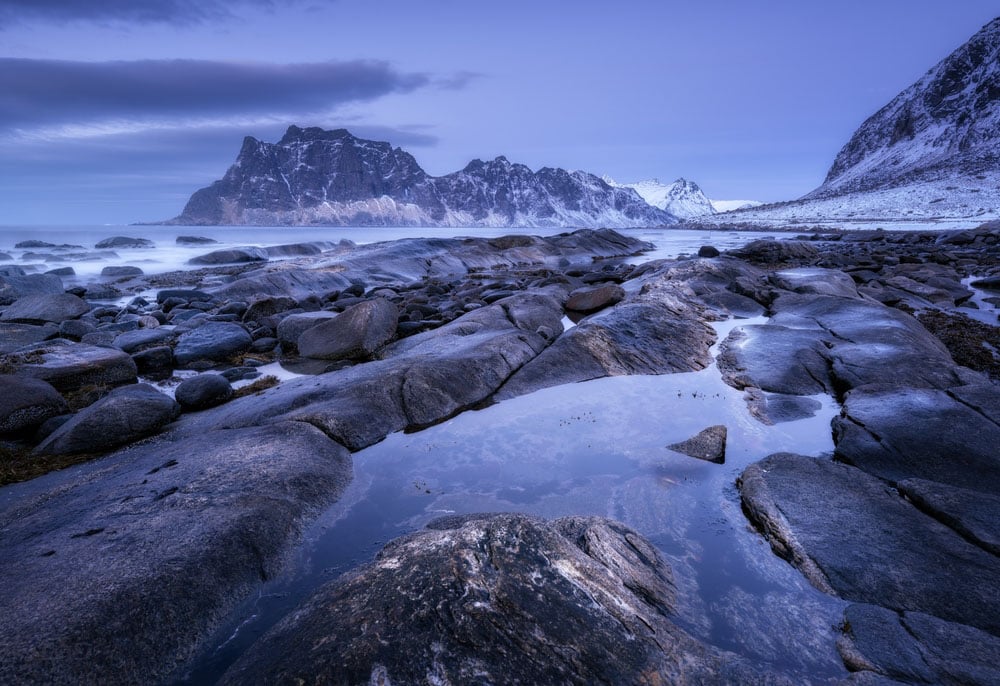
Photo by Denis Belitsky via Shutterstock
Adding artificial light works fantastically for creating or enhancing foreground interest. It can also highlight aspects of the scene elsewhere in the frame, such as an off-center element.
This landscape techniques is especially useful when the foreground subject you want to use as an important part of the composition is backlit or too dimly lit to impact the photo.
Here’s how to do it: Set up your scene as you normally would, adjusting the exposure to capture the landscape. Then, add a light for the foreground subject. While your camera’s built-in flash may work in some instances, you’ll likely need something more powerful or closer to the subject for situations like this.
Many digital camera systems have amazingly accurate and versatile flash units that work with the camera’s AF and metering system to perfectly balance the combined exposure.
Here is a nice YouTube video from Øyvind Martinsen showing how to use fill flash for landscape photography:
Sometimes, you won’t want a perfectly balanced exposure but rather a foreground subject that pops out at you. A small, portable LED light source is a better choice in these situations. A camera mount system like the Octopad is handy for this use, whether for a foreground subject or something else in the frame.
A handheld LED light or a flashlight can be used to create a light painting within a landscape image. This technique is usually best when the ambient light is very low, such as during Blue Hour, twilight, or fully dark nighttime.
Balance Contrast
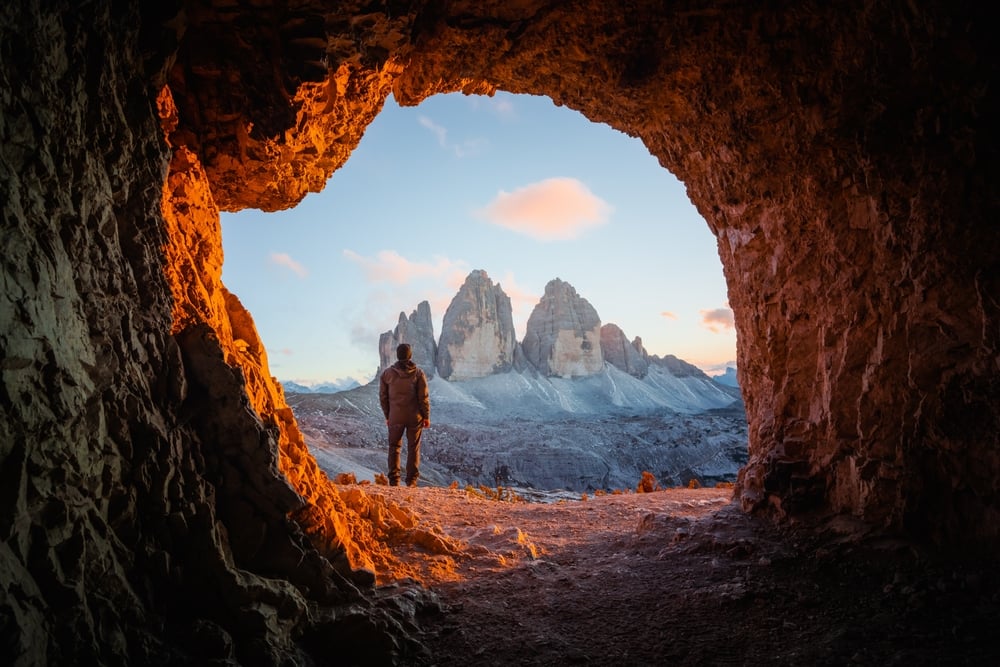
Photo by Smit via Shutterstock
Situations for using artificial light in landscape photography will often be similar to those discussed above. Instead of highlighting the foreground objects, however, we can also blend in and balance the artificial light with the natural or ambient light.
The automated flash systems on the camera or the LED lights placed near the subject could be utilized for this style of using artificial light for landscape photography. To fine-tune exposures, you can also use some of the controls in post-processing programs such as Lightroom or Luminar.
In the image above, for example, you might add lighting to the cave to balance the darkness of the walls and cave floor with the brightness of the scene outside the cave.
Types of Artificial Light for Landscape Photography
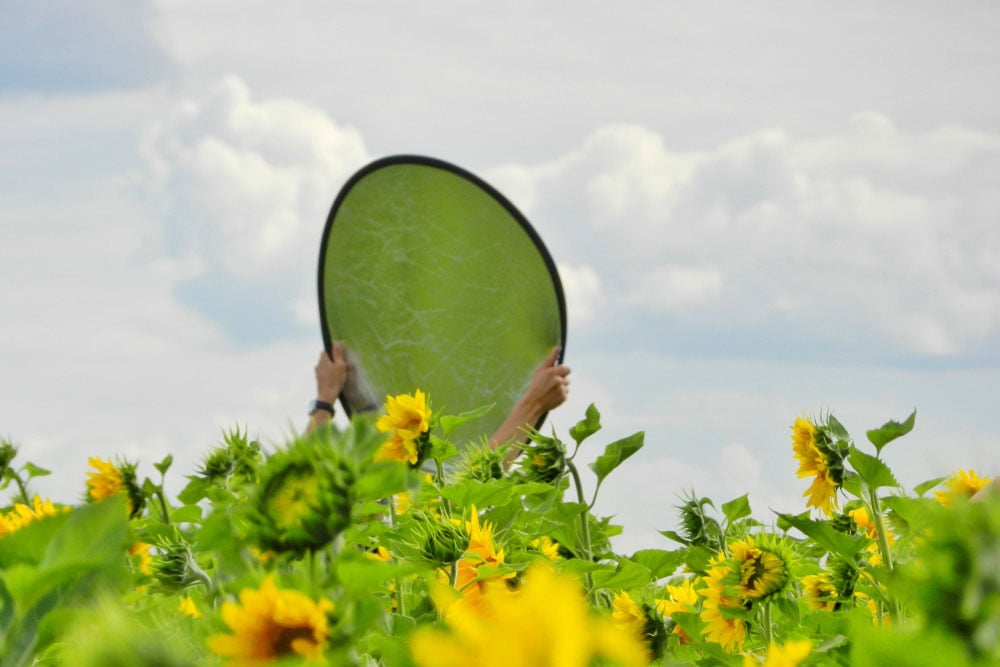
Photo by Skamai via Shutterstock
I use three types of artificial light for landscape photography.
A large reflector like the one shown above can be used to modify light, directing reflected light toward the subject that needs illumination. An on-camera flash unit is a simple method for adding light that can work with your camera’s automation.
The third type of artificial light for landscape photography, a portable LED light, is what I consider the most versatile. Battery-powered LED lights for photography can be placed anywhere you need them, the power level is adjustable, and many of them have controls for changing the color temperature of the light emitted to match what’s already in the scene.
Useful Accessories for Landscape Photography Lighting
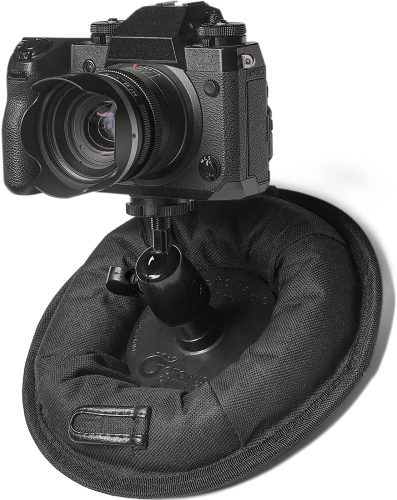
For many of the situations in which we need to add artificial light for landscape photography, we also need that light to be placed off-camera.
Octopad is the most useful light holder for landscape photography lighting due to its unique combination of features.
The first feature I like to highlight is that it can go anywhere. Octopad is a semi-rigid, weighted disk made of heavy-duty material with a non-slip pad on the bottom. With this construction, it can be placed on any surface, even if that surface is angled up to 45 degrees.
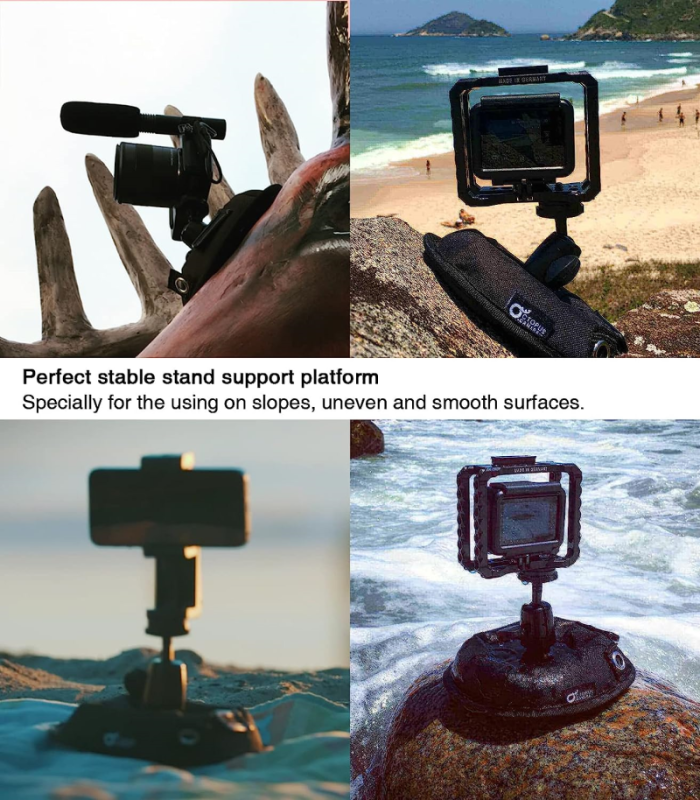
Octopad has a ball head on top that can also be combined with an extension arm if more height is needed. It’s easy to carry in a camera backpack, and since it’s low-priced, you can keep two or more on hand for using several lights. It can also be used as a tripod alternative to hold a camera and lens, or it can hold a remote microphone for videography.
Photo Ideas Using Artificial Light for Landscape Photography
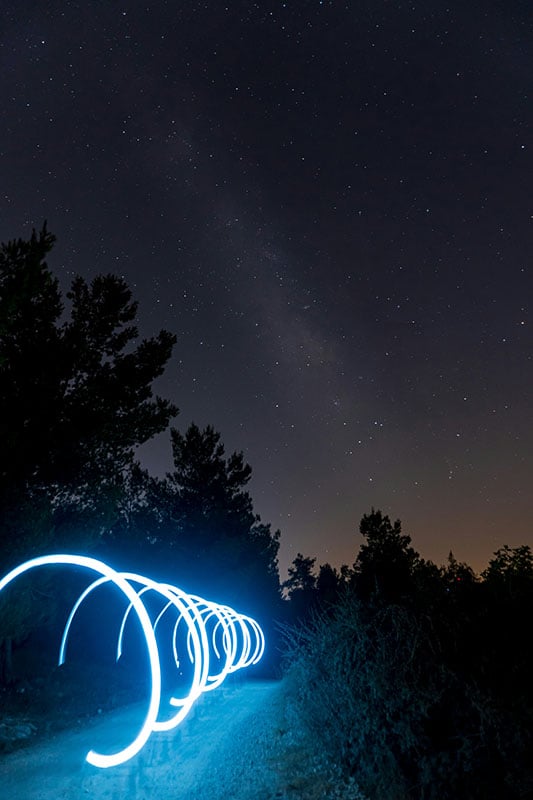
Your creative brain is already working, creating all sorts of situations in which you could use artificial light when photographing landscapes.
One situation that often arises is shooting into the sun’s direction for whatever artistic reason you’re employing. This leaves the foreground parts of the scene pretty much backlit or falling into shadow.
Light painting, either extreme or subtle, is a fantastic use of artificial light for landscape photography. It can be quite striking when used as an art form in its own right, but I think the subtle use of light painting often creates a beautiful landscape with clearly defined objects throughout the scene.
Let’s not forget environmental portraiture. What better way to create an environmental portrait than to put the subject in the environment and use them as part of the landscape?
Architectural subjects, such as abandoned structures in rural areas, can also be great subjects for using artificial light in landscape photography. If you put your mind to it, you’ll come up with dozens of other ideas for landscape photography lighting.
A quick heads-up: If you snag something through our affiliate links or check out our sponsored content, we might earn a commission at no extra cost to you. But fear not, we’re all about recommending stuff we’re truly stoked about!

